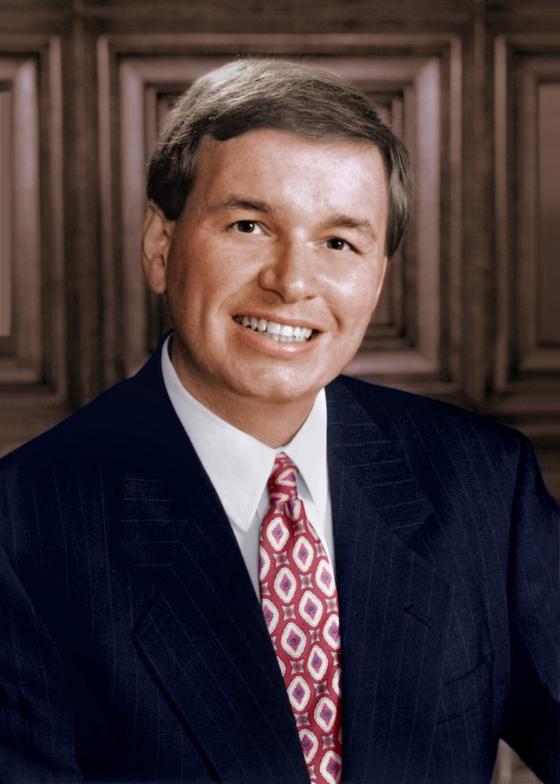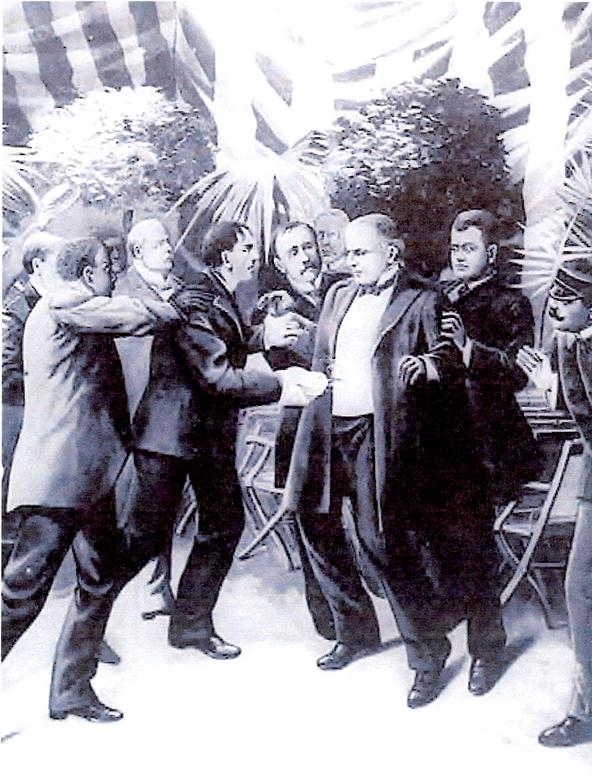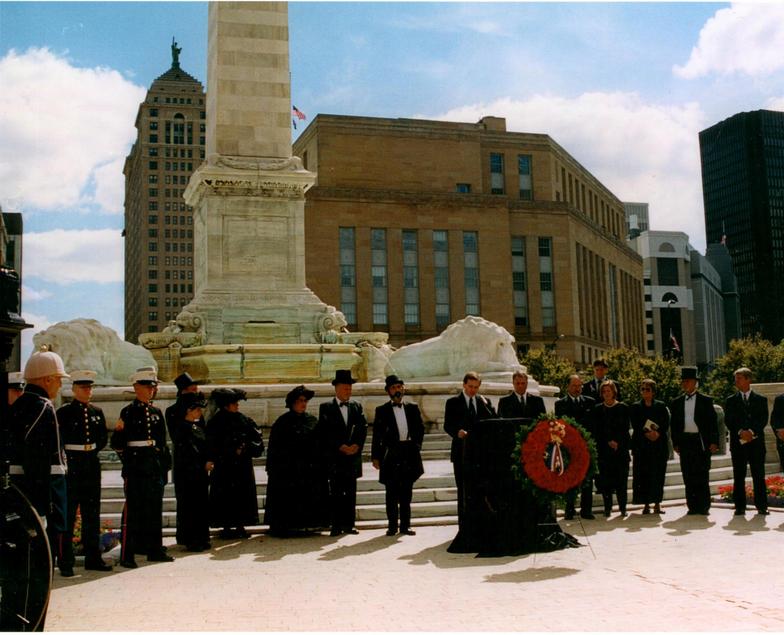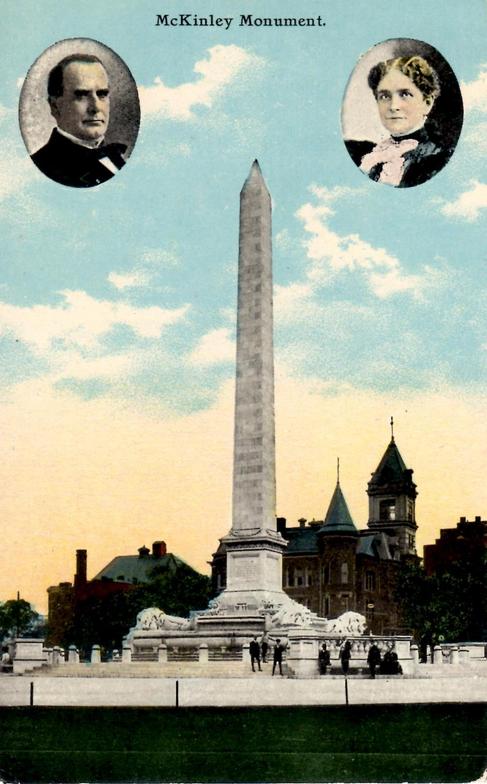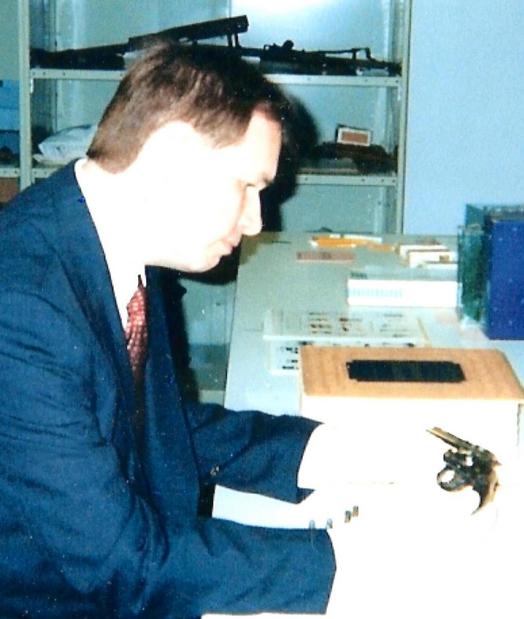Our Presidents Up-Close
John Burke Jovich
Presidential Historian
 | ||||
The McKinley – JFK Connection
Exactly eighty minutes after he assassinated President John F. Kennedy, and only thirty-five minutes since gunning-down Officer J. D. Tippit, Lee Harvey Oswald was arrested inside the Texas Theater by several Dallas policemen.
Oswald would not be apprehended without a scuffle. He resisted arrest by pulling a .38 calibre revolver from his waistband with one hand and striking Patrolman Nick McDonald with the other. In defense, McDonald jabbed Oswald over the right eye as fellow officers grappled for the assailant’s revolver. Oswald began shouting obscenities at the cops. As he was led from the theater to a waiting patrol car he yelled, “I protest this police brutality!” Yet the sociopathic malcontent had no idea at that moment whether he was being arrested for the murder of the president or the police officer, or both.
 | ||||||
The Leslie's Weekly Illustrated depiction of President McKinley being gunned down by assassin
Leon Czolgosz
The bruise and small cut made by McDonald over Oswald’s right eye required no sutures, but the mere sight of it by a phalanx of reporters at Dallas Police headquarters cultivated rumors that Oswald had been “roughed up” by interrogators – hearsay which ultimately contributed to his own death.
Two days later, Sunday, November 24, 1963, millions of mourning Americans were transfixed to their television screens as JFK’s casket was escorted from the White House to the U.S. Capitol rotunda where it would lie in state until his funeral and burial the following day. Back at Dallas Police headquarters the chief of police, Jesse Curry, wished to dispel the false revelations pursuant to Oswald’s treament by detectives. He permitted news reporters and their camera crews to congregate in the department's basement to broadcast Oswald’s transfer to the Dallas County Sheriff’s building (which overlooked the assassination site, Dealey Plaza). Curry reasoned that if the entire nation had an opportunity to observe no additional contusions on Oswald’s face, perhaps allegations of abuse upon the prisoner would diminish.
At the Buffalo & Erie County Historical Society, John was granted the rare privilege of examing the .32 calibre Iver-Johnson revolver used by Czolgosz to assassinate McKinley
Only one of the three major networks, NBC, cut away from the late president’s funeral to provide live coverage of the alleged assassin’s transfer. At 11:21 a.m. Central Standard Time, local night club proprietor Jack Ruby, a man who greatly admired President Kennedy, charged at Oswald, killing him with a single shot to the upper abdomen.
The American people, gripped by the shock of JFK's death, were stunned. Ruby had openly grieved over the loss of his beloved president and wished to spare First Lady Jacqueline Kennedy the humiliation of having to return to Dallas as a key assassination witness during Oswald's trial. But the man who expected a pat on the back from his many acquaintances at the police station did nothing more than spawn decades of conspiracy theories.
The Dallas police had lost their prisoner in the most humiliating way possible – under their own roof!
How could the authorities in Dallas have averted Oswald’s death? Easily, if only they had taken the time to research the transfer of the last presidential assassin in American history, Leon Czolgosz. After Czolgosz shot President William McKinley at the Pan-American Exposition in Buffalo on September 6, 1901, mobs of angry citizens attempted to break their way into the city jail to dispense vigilante justice. As a means of keeping their detainee alive, and thereby guaranteeing his appearance at trial, Buffalo’s finest purposely dressed Czolgosz in the uniform of a police officer and transported him to the courthouse at four o’clock in the morning.
The ingenious deception, which worked so well for Buffalo’s law enforcement team in 1901, was apparently lost on Dallas's superiors sixty-two years later!
 | ||||||
John eulogizes William McKinley at the McKinley Monument in downtown Buffalo, New York,
during the centennial of the 25th President's death
The most compassionate man ever to serve as President of the United States was William McKinley.
All too often in American history, the passage of time overshadows the laudatory virtues of superior men. McKinley was a near-great chief executive, an effective leader who oversaw the United States' wartime victory over Spain; acquired Guam, Puerto Rico and the Philippine Islands; and ushered-in the twentieth century with sound economic policies and promotion of international trade.
 | ||||||
"Will" McKinley was also a kindly, genial man whose 24/7 devotion to his invalid wife, Ida, is the stuff of legend. Even his political foes were unable to find fault in his qualities of character. Not that McKinley was fickle; to the contrary, the man who acted heroically during the Civil War battle of Antietam always persevered in the face of personal and public adversity.
One additional anecdote: During a public reception at the White House, President McKinley, who donned a red carnation for such events, removed the crimson flower from his lapel and smilingly handed it to a little girl named Rose Fitzgerald – the future mother of another assassinated president -- John Fitzgerald Kennedy.
A period postcard image of the newly-built McKinley Monument, circa 1907
 | ||||



